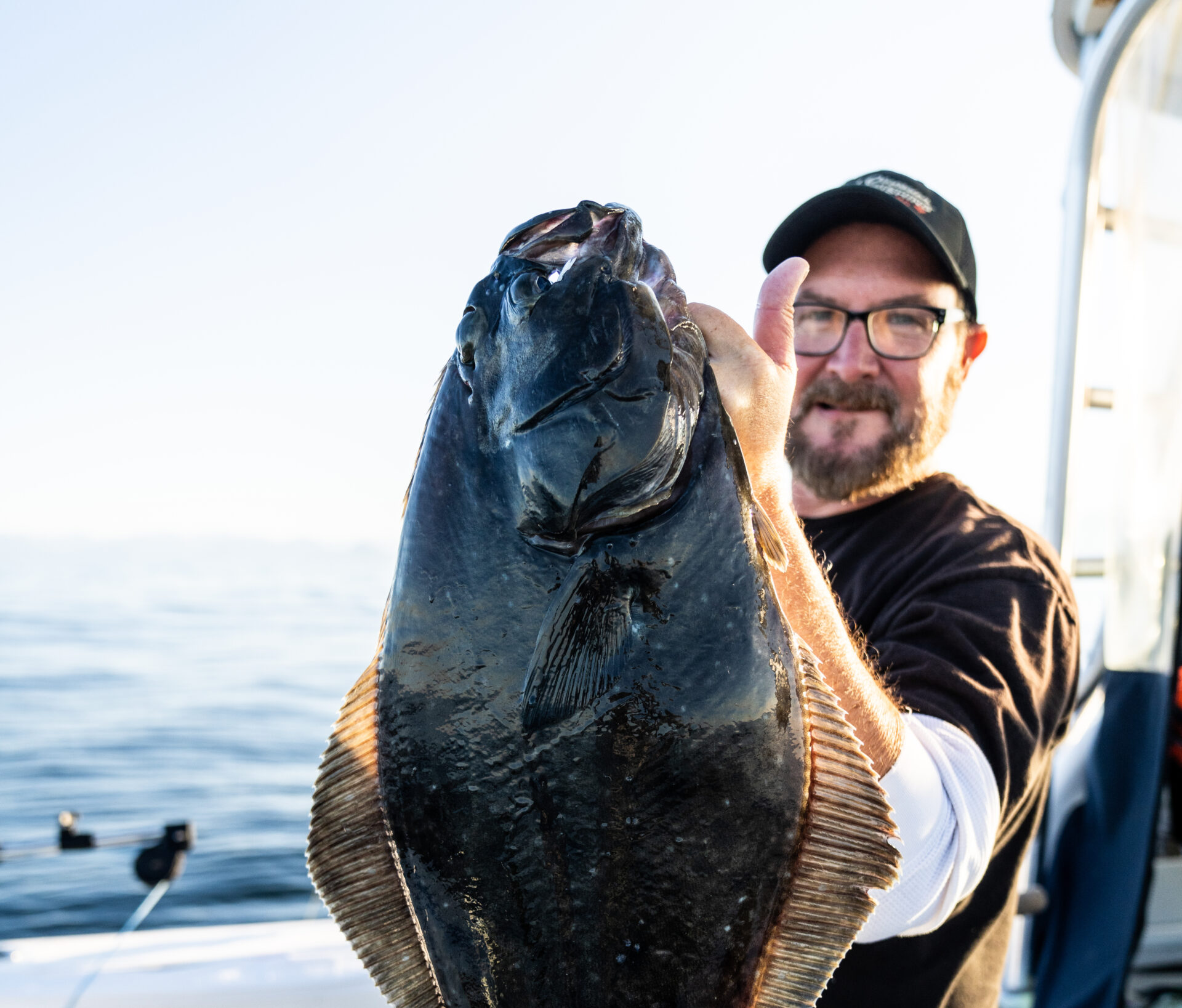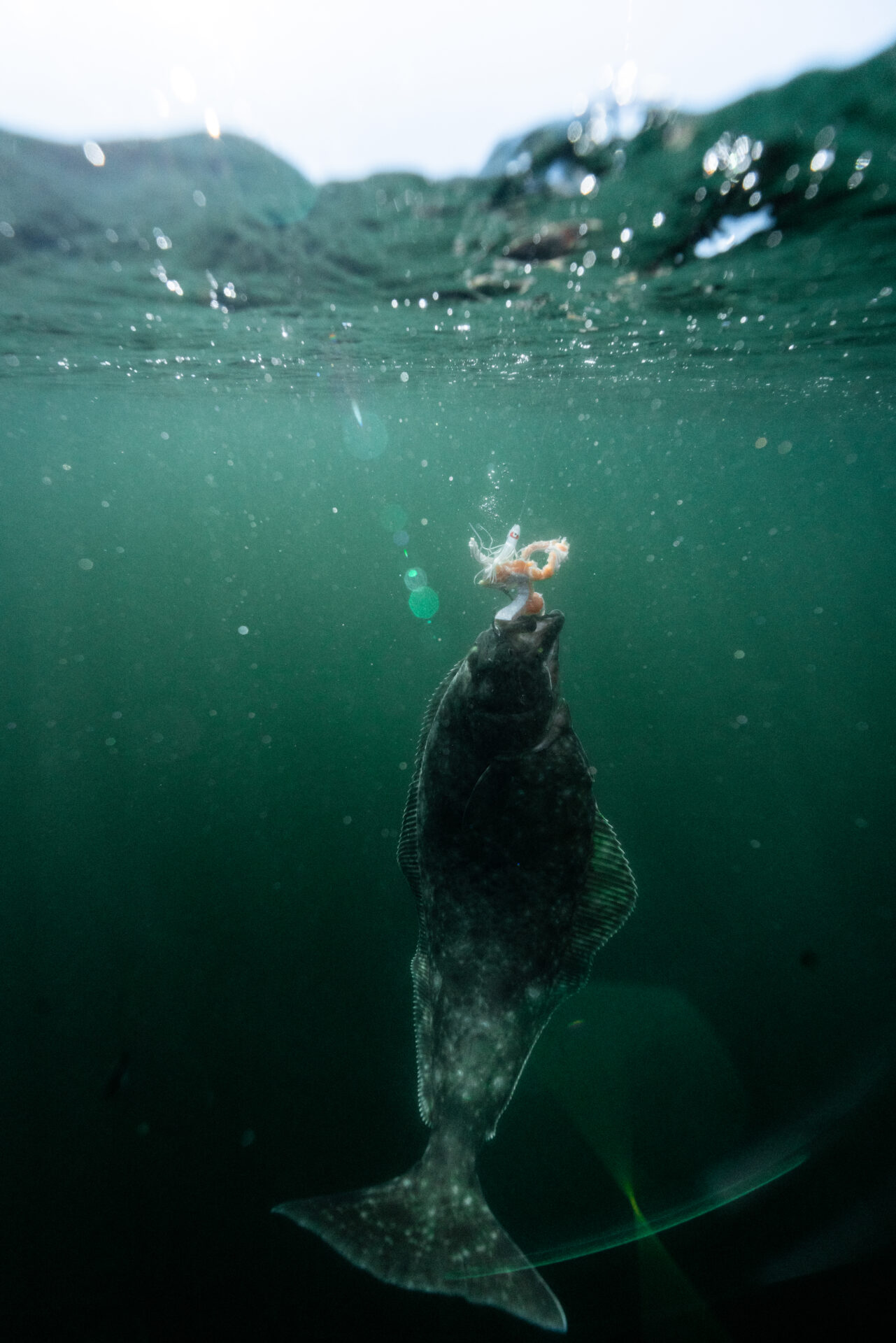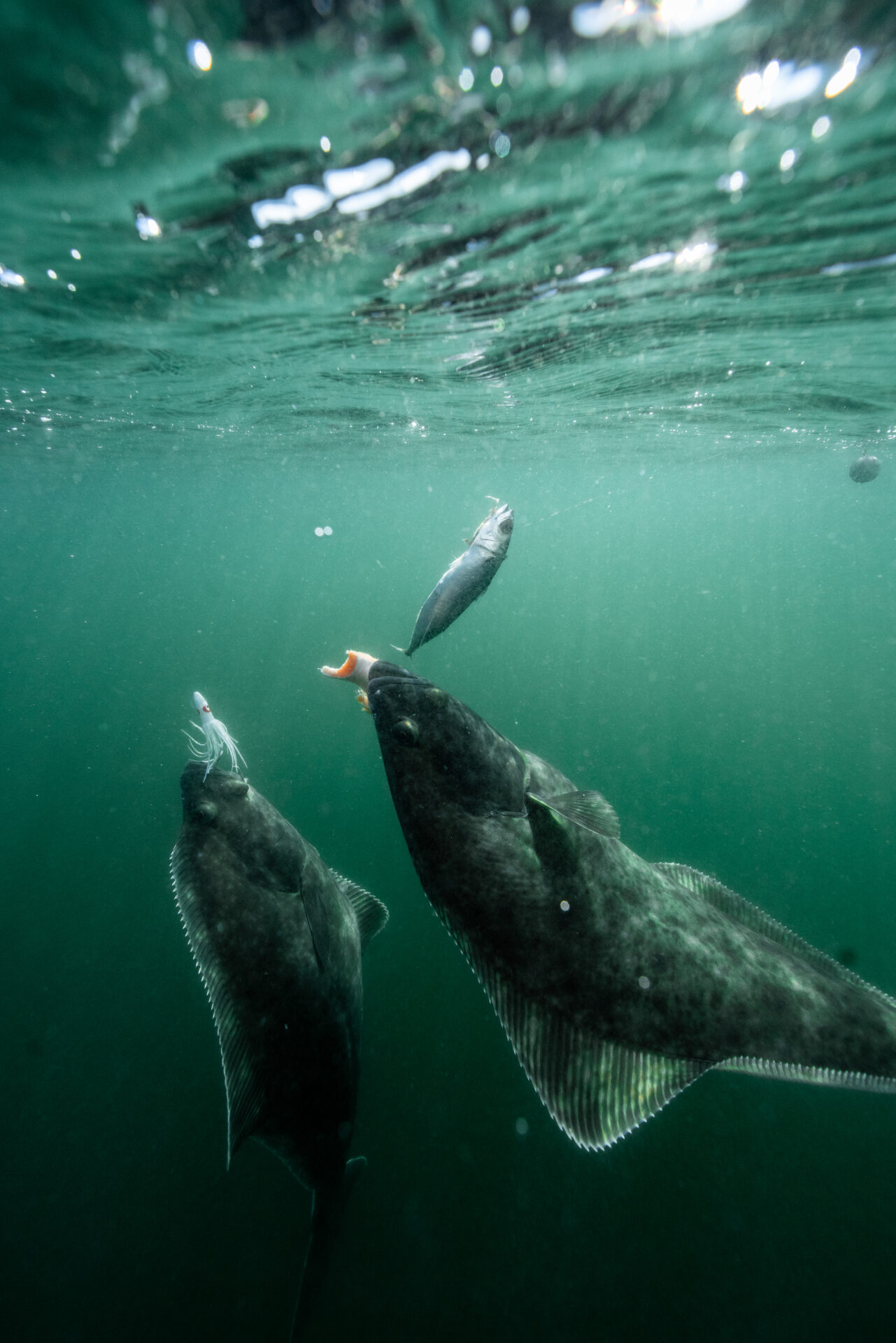Those of us who live on the west coast of British Columbia are truly blessed, not only with the beauty of our surroundings, but also with the west coast lifestyle of exploring the mountains, lakes, rivers, streams and, of course, the open Pacific Ocean. For some people, recreational sport fishing is a hobby; for others, it is a passion; and for some of us, it is our livelihoods as professional sport fishing guides and lodge owners and operators. In our case, we are Reel Obsession Sport Fishing, based in Zeballos, BC, a tiny village on the wild west coast of Vancouver Island, the gateway to Esperanza Inlet, Nootka Sound and beyond to its offshore waters.
Advertisement
Halibut trips have become one of the staple charters in our industry. Not only because of their prized white meat and exceptional table fare, but also because they have one of the longest running seasons here on our coast, starting typically in early spring and lasting through until late fall or early winter. Seasons will vary of course, depending on yearly fish abundance and catch rates throughout the season. Halibut are also a migratory fish, just as salmon are, so success rates will vary due to run sizes, with peak and low periods.
Here are a few things to remember, as well as some tricks and proven methods to try which may help increase your catch rates before and while you prepare to head out on the water for a day of angling.
Advertisement
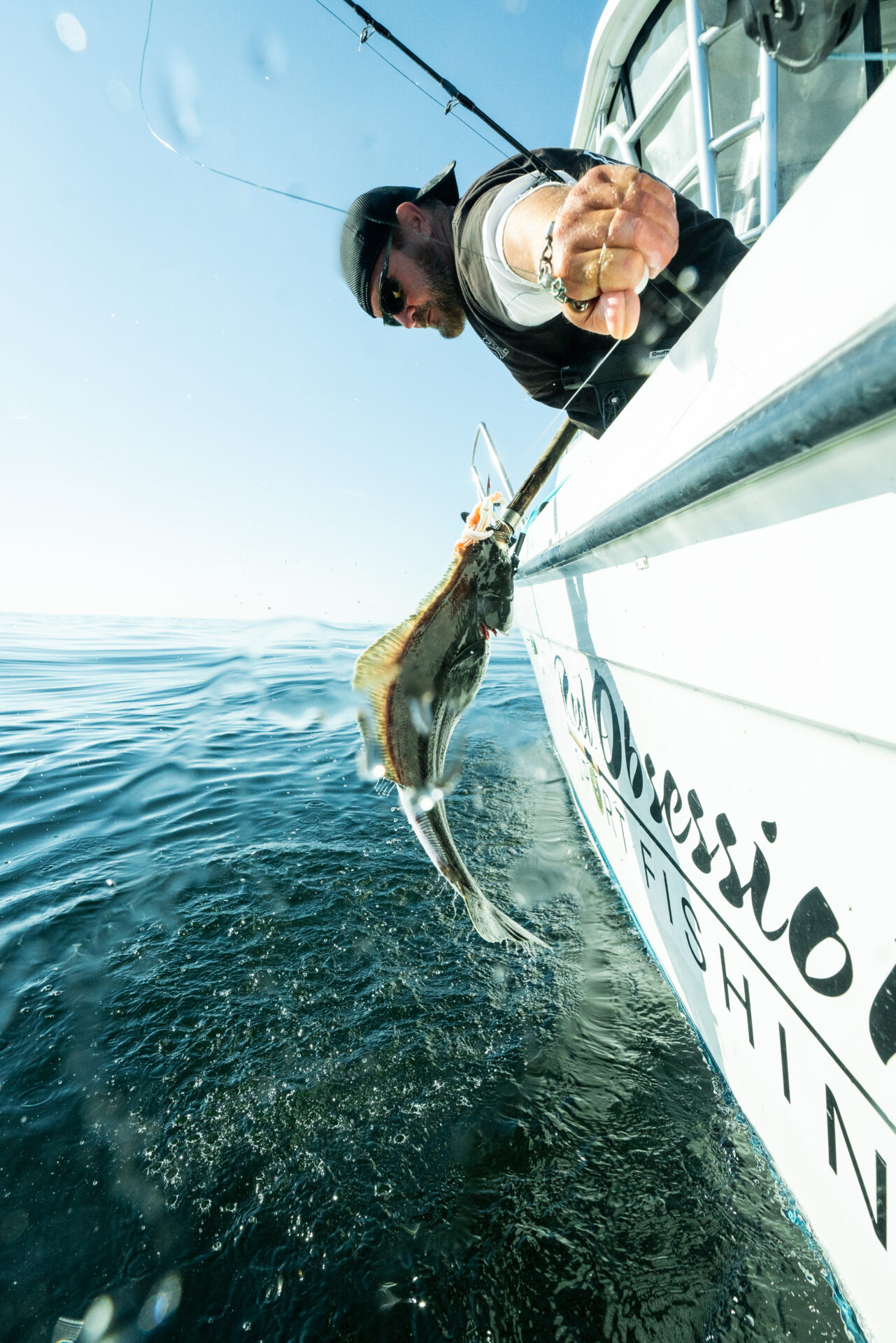
First and foremost, check the yearly regulations for opening time, closures, as well as slot sizes and limit restrictions, as these have been known to change in season. Secondly, follow the local weather and tide forecast predictions, as both play important roles in comfortably and successfully fishing for the day. If drifting or anchoring with bait, and or drift fishing bait and jigging at the same time, the weather and tides are extremely important. Our preference is to anchor with bait, typically before the high or low slack or there shortly after allowing your boat to swing and hold properly throughout the tide flow without swinging over top of your anchor line and creating a frustrating, tangled mess. If you find your boat coming up on your anchor during the slack, use your kicker in reverse to keep it off the anchor and in the spot. Once the tide switches, you can usually spin the boat around your anchor using the kicker, so you are fishing with the current again. Some halibut spots can be quite technical, and if you have drifted off the spot during a tide change, pull anchor and reset it on the spot you were aiming for.
When choosing an area for potential anchoring, search for structure up-crops or underwater valleys which may hold bait fish, as well as migratory routes for halibut, just like game trails. Once you have picked your spot and your boat is holding properly without too much stern swing, you can start to set-up for fishing. The first thing we do is get our first couple lines out with good, oily baits and scent tubes. Scent tubes filled with cotton balls will slowly release the bait oils you put in them, giving a constant scent trail to your gear. There are a wide variety of scents available; the gel formulas that Pro-Cure has created work great and last a long time. Leader rigs vary due to personal preference, from single circle hooks to tandem single and/or triples can all be used. We prefer using monofilament leaders in the 250-pound range. Spreader bar rigs or simple large three-way or sliding swivels with your own made-up leaders, all these systems will work. Most of us will use a visual attractor as well, such as Gibbs Jumbo Squid in green glow oil slick or pink and white above our hooks and bait. We choose Gibbs Delta products, as they have such an excellent, diverse selection and product line to choose from. The Gibbs Delta eight- and 10-inch Hali Hawgs in glow or white are another of our go-to add-ons for our leaders.
Advertisement
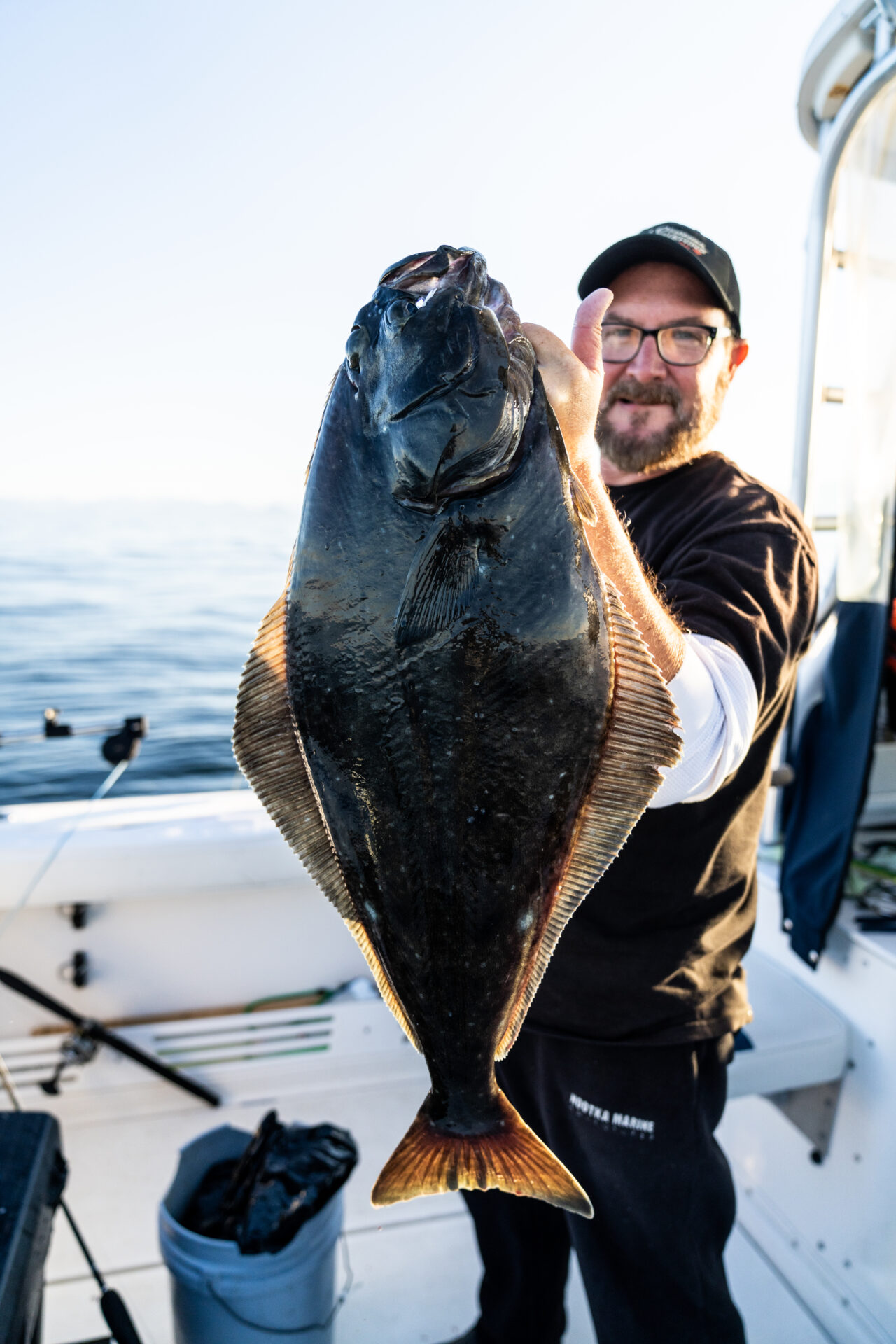
Bait selection is usually a mix of soft and durable baits. For example, herring and mackerel would be a soft bait and easily ripped from your hooks, whereas salmon bellies and octopus are much harder and far more durable. We will typically use a mix, both by themselves and sometimes in combination. For improved ability to keep soft baits on the hook, we will use bait string wrapped around the bait and leader/hook or small zap straps to not allow the baits to be picked off as easy.
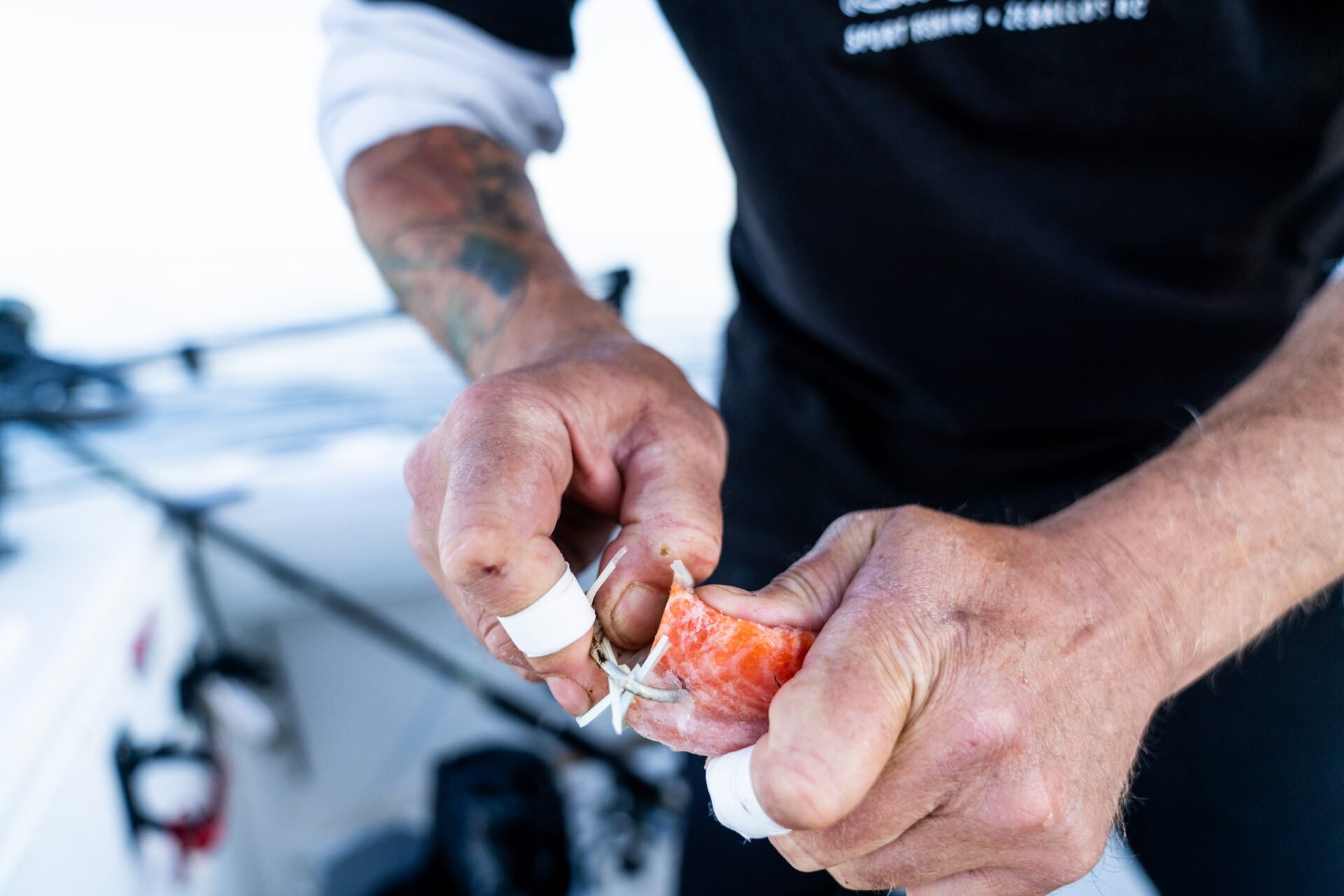
Once you have sent your rigs to the bottom, it is extremely important that you babysit your gear. We are constantly letting the gear down and winding up our rigs, ensuring that our gear is always no more than a couple feet from the bottom. This is extremely important to optimize your opportunities for hook-ups and decreasing your chances of snagging bottom. It also keeps your scent trail flowing along the bottom where these fish are typically travelling or holding. With that said, we always like to have one jig fishing as well. We have found that on certain days, halibut may not be as interested in bait and having that jig around can increase your success.
A few important tips to assist in landing your own slab of white gold:
- You must be patient when setting hooks on halibut, as the bite will almost never be the same.
- Be sure to let them take the bait fully before setting the hook or, in the case of using circle hooks, merely applying good pressure without line being taken out on the reel. There is some patience and proper technique needed if using circle hooks, but once the fish are hooked, you will very rarely lose them.
- Tight lines are always crucial during the fight. Try not to ever give halibut slack line while reeling them up, as they will violently shake their heads and bodies. Swinging a one to two-and-a-half-pound weight will only increase the chances of your hooks popping free from their mouth.
- Once you have your fish within visual range, it’s time to determine if it is of legal size. We recommend making a mark on your harpoon or even a deck brush will work for the maximum size length to make it easier to see if the fish is within the allowable slot size.
- If it’s a go, do not pull the halibut’s head above water until you are ready with a fast gaff or harpoon, as this is also another crucial time where fish will be potentially lost. We give preference to bonking the fish once or twice if possible before bringing it inside the boat.
- Once in the boat, a halibut can be extremely hard on anything in their way, including rods, tackle boxes and people, so be sure to clear everybody and everything out of the way.
- Don’t forget, after you have dispatched the halibut, be sure to bleed them out by cutting either their gills and/or tail and store on ice in a fish hold or cooler. This will ensure clean, cool, white meat back at the fillet table after your day on the water.
Whether you are new to halibut fishing with your own boat, looking for an exciting outing with family or friends, or just exploring to increase your catch success, we always suggest a local charter or lodge. From Victoria to the Queen Charlottes, you have many great operators to choose from. Take advantage of this special place we call home and enjoy a day or three out on the water, pursuing white gold!
